Idea by
Benjamin Gallegos Gabilondo, Marco Provinciali
Supervoid
Call for ideas 2018
Otium
Otium
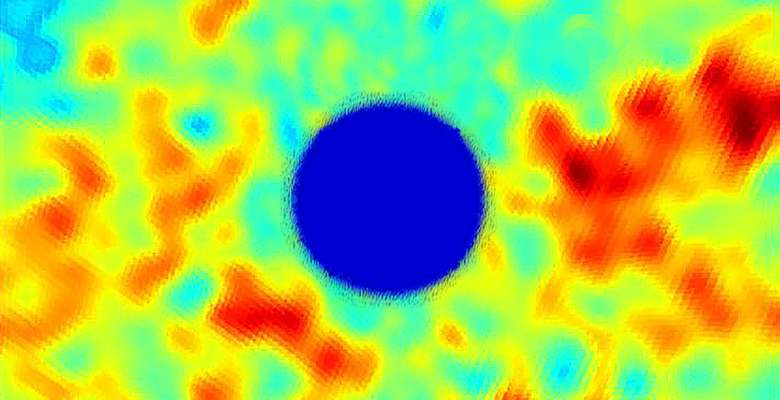
Hyper-connectivity has become by all means a new “state of nature”, and as for any environmental condition some among us will sooner or later seek shelter from it.
Passing from room to room, from inside to outside, from public to private, we are also constantly moving through a man created electromagnetic field: the hertzian space(1). We argue that a planning of this uncharted landscape is not only challenging for architects, but might become necessary.
Otium is a device that introduces a radical discontinuity within the field, a sudden clearing, a new form of private space. Going inside it you are you are actually leaving the hertzian space.
A light curtain which functions as a Faraday cage shields the occupants from the electromagnetic field, leaving them in a new condition of silence, the noisy multitasking is left outside. In a rather out of fashion praise of idleness, Otium reclaims our “right to be lazy”(2), it is a reservoir for unproductiveness.
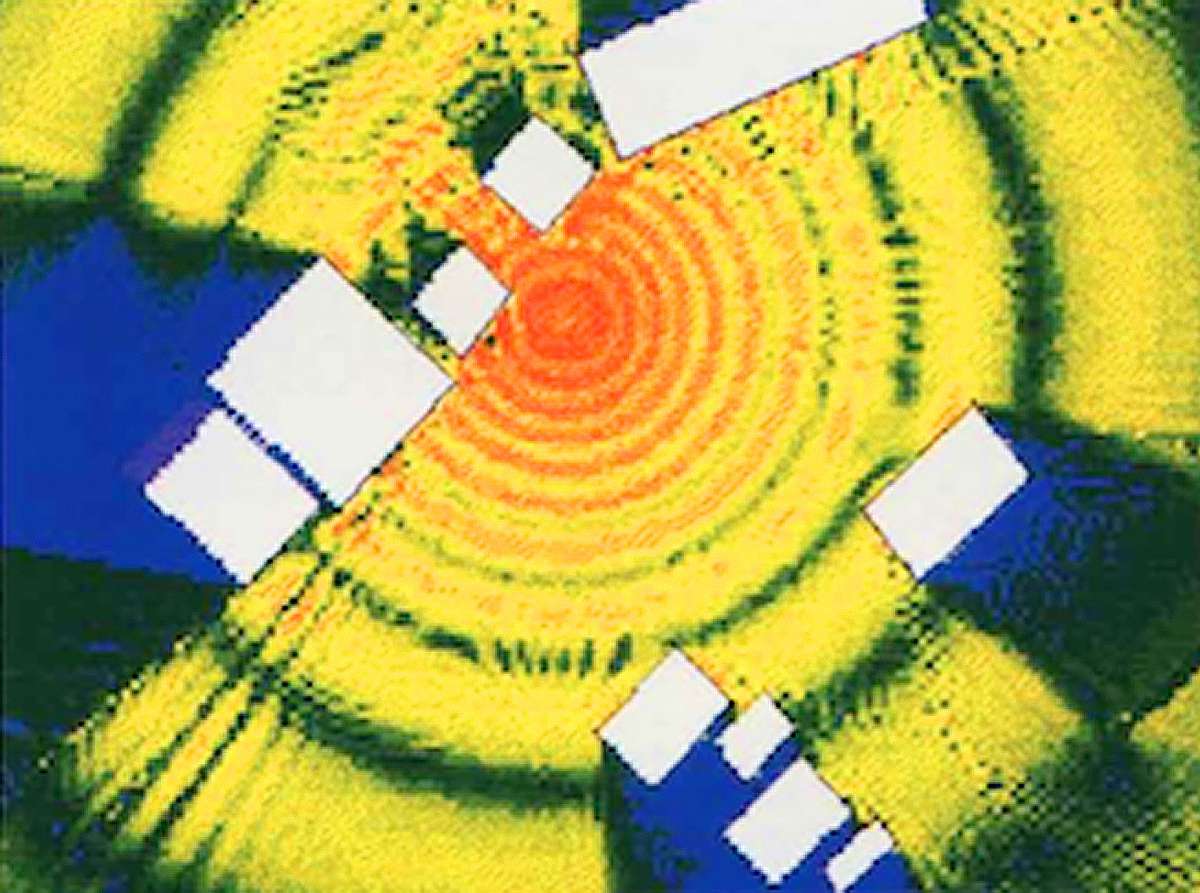
Pour Le Corbusier, c’était facile – pas de wi-fi.(3)
Image above showing radio waves interacting with buildings from: Design Noir. The secret life of electronic objects, London/Basel 2001
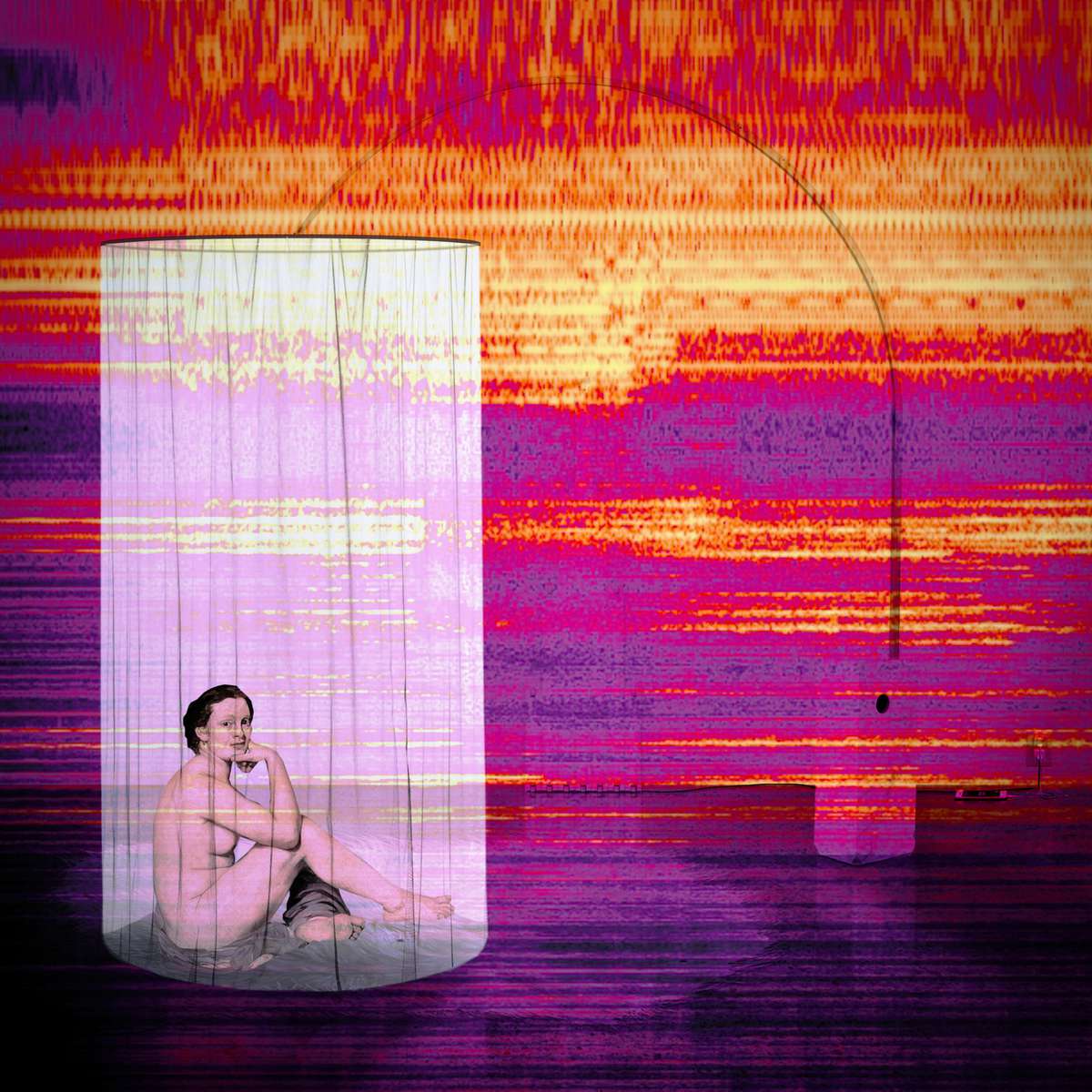
Otium challenges the ubiquity of the invisible carrier of all informations: the Hetzian space. Here it is presented at a domestic scale.

Otium at an architectural scale: a building sheltering the occupants from hyper-connectivity, not from rain and sun.
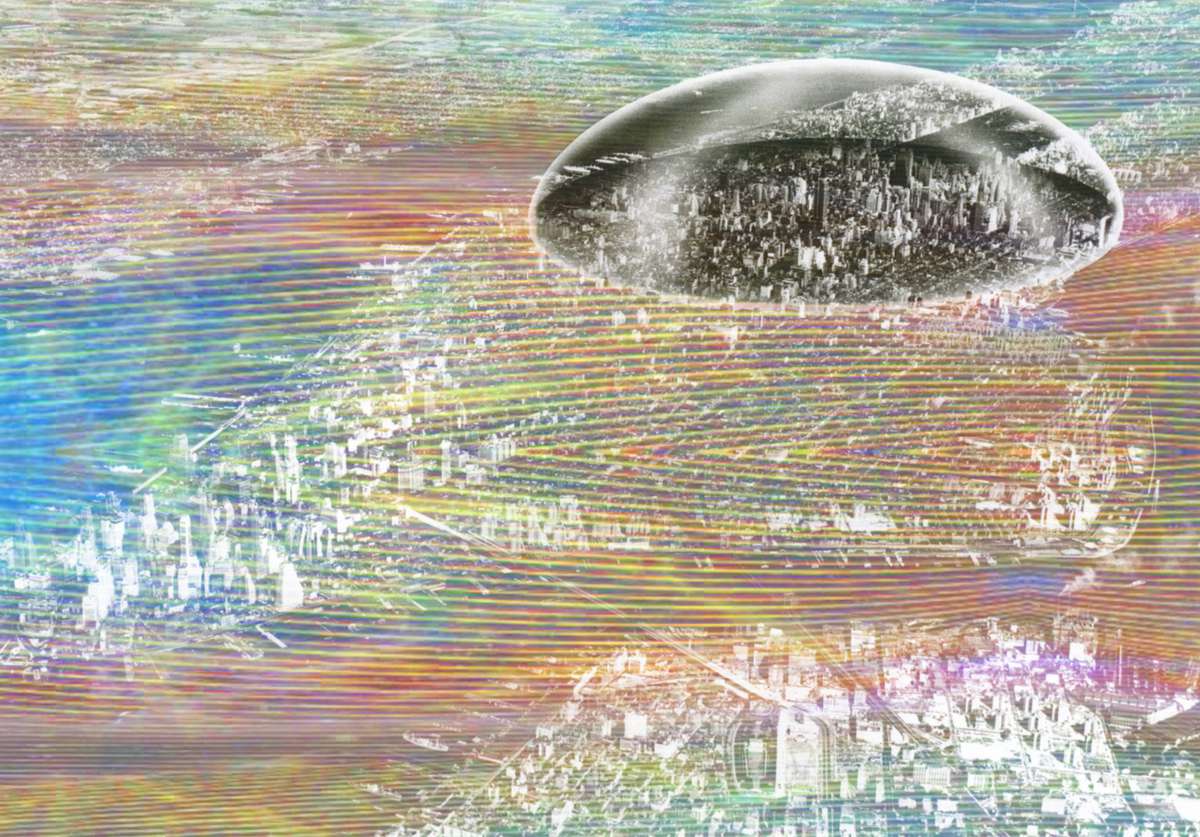
Otium at an urban sale, a new from of urban park which is not made out of trees, but provides instead electromagnetic silence.
(1) A. Dunne, F. Raby, Design Noir, London/Basel 2001
(2) Paul Lafargue, The Right to be lazy and other studies, Chicago 1883
(3) paraprhased from the famous LC quotation “pour Ledoux, c’était facile – pas de tubes”, as found in: “A home is not a house” by Reyner Banham, Art in America #2, 1965
Otium
Otium

Hyper-connectivity has become by all means a new “state of nature”, and as for any environmental condition some among us will sooner or later seek shelter from it.
Passing from room to room, from inside to outside, from public to private, we are also constantly moving through a man created electromagnetic field: the hertzian space(1). We argue that a planning of this uncharted landscape is not only challenging for architects, but might become necessary.
Otium is a device that introduces a radical discontinuity within the field, a sudden clearing, a new form of private space. Going inside it you are you are actually leaving the hertzian space.
A light curtain which functions as a Faraday cage shields the occupants from the electromagnetic field, leaving them in a new condition of silence, the noisy multitasking is left outside. In a rather out of fashion praise of idleness, Otium reclaims our “right to be lazy”(2), it is a reservoir for unproductiveness.
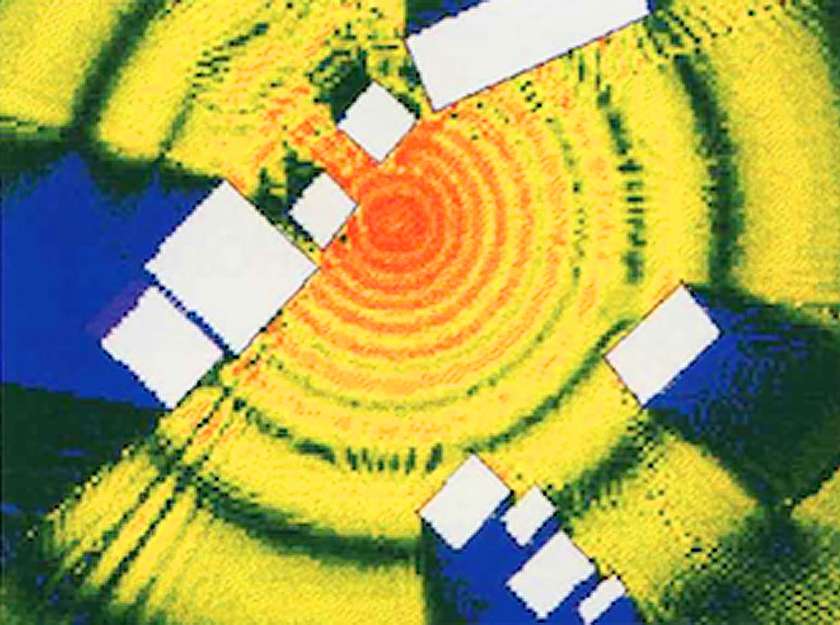
Pour Le Corbusier, c’était facile – pas de wi-fi.(3)
Image above showing radio waves interacting with buildings from: Design Noir. The secret life of electronic objects, London/Basel 2001
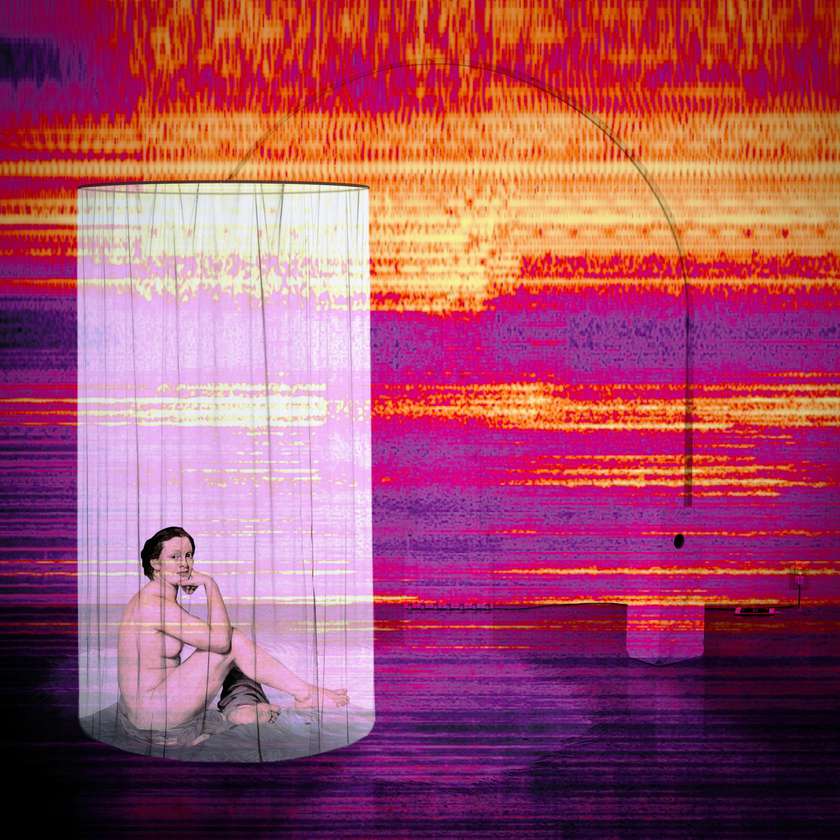
Otium challenges the ubiquity of the invisible carrier of all informations: the Hetzian space. Here it is presented at a domestic scale.
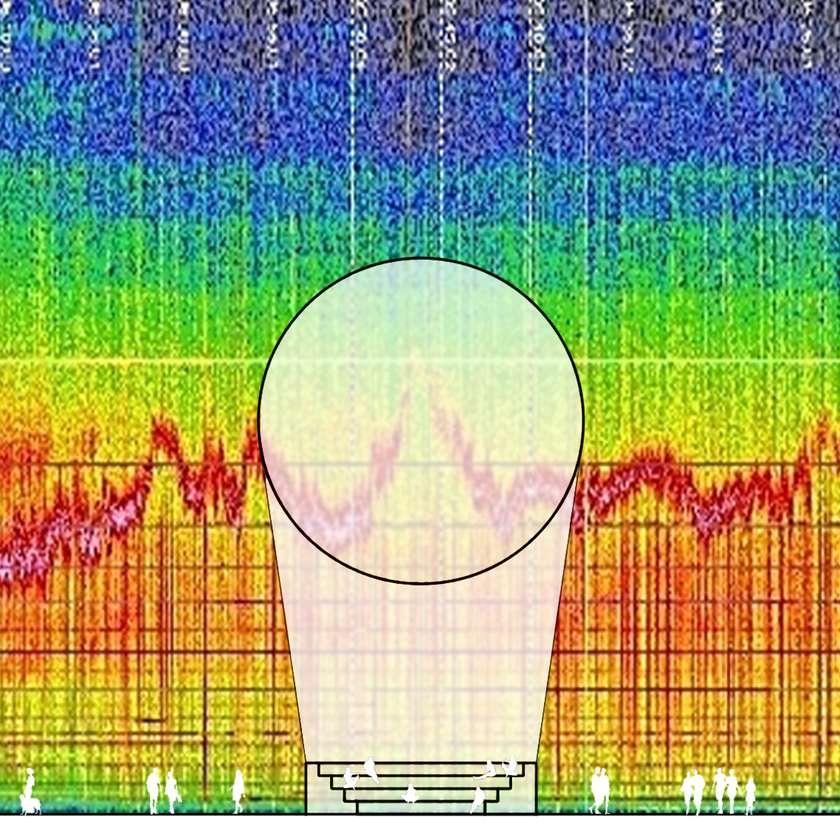
Otium at an architectural scale: a building sheltering the occupants from hyper-connectivity, not from rain and sun.
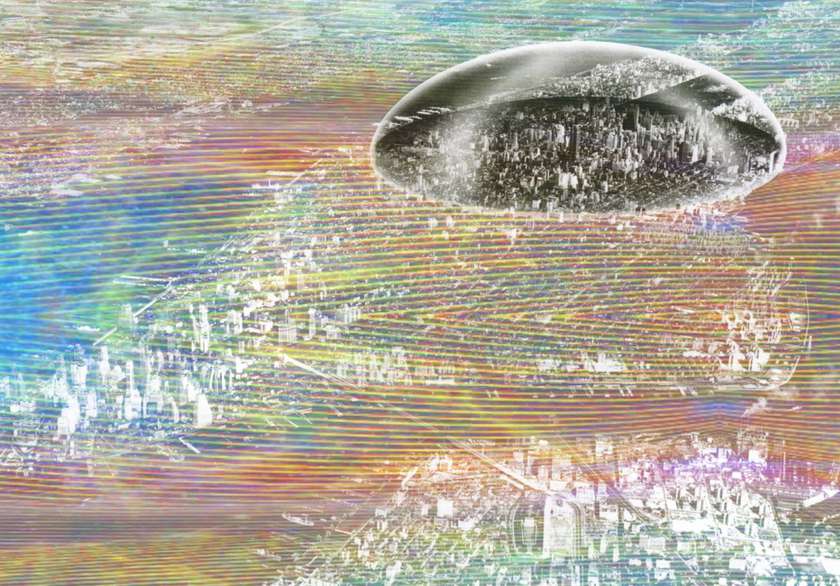
Otium at an urban sale, a new from of urban park which is not made out of trees, but provides instead electromagnetic silence.
(1) A. Dunne, F. Raby, Design Noir, London/Basel 2001
(2) Paul Lafargue, The Right to be lazy and other studies, Chicago 1883
(3) paraprhased from the famous LC quotation “pour Ledoux, c’était facile – pas de tubes”, as found in: “A home is not a house” by Reyner Banham, Art in America #2, 1965